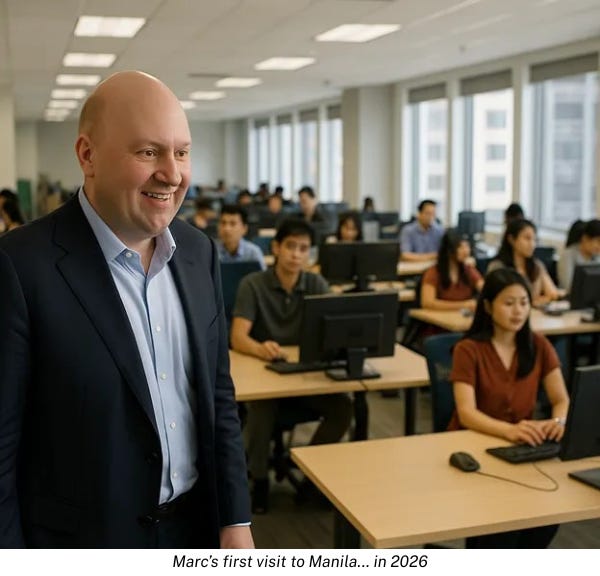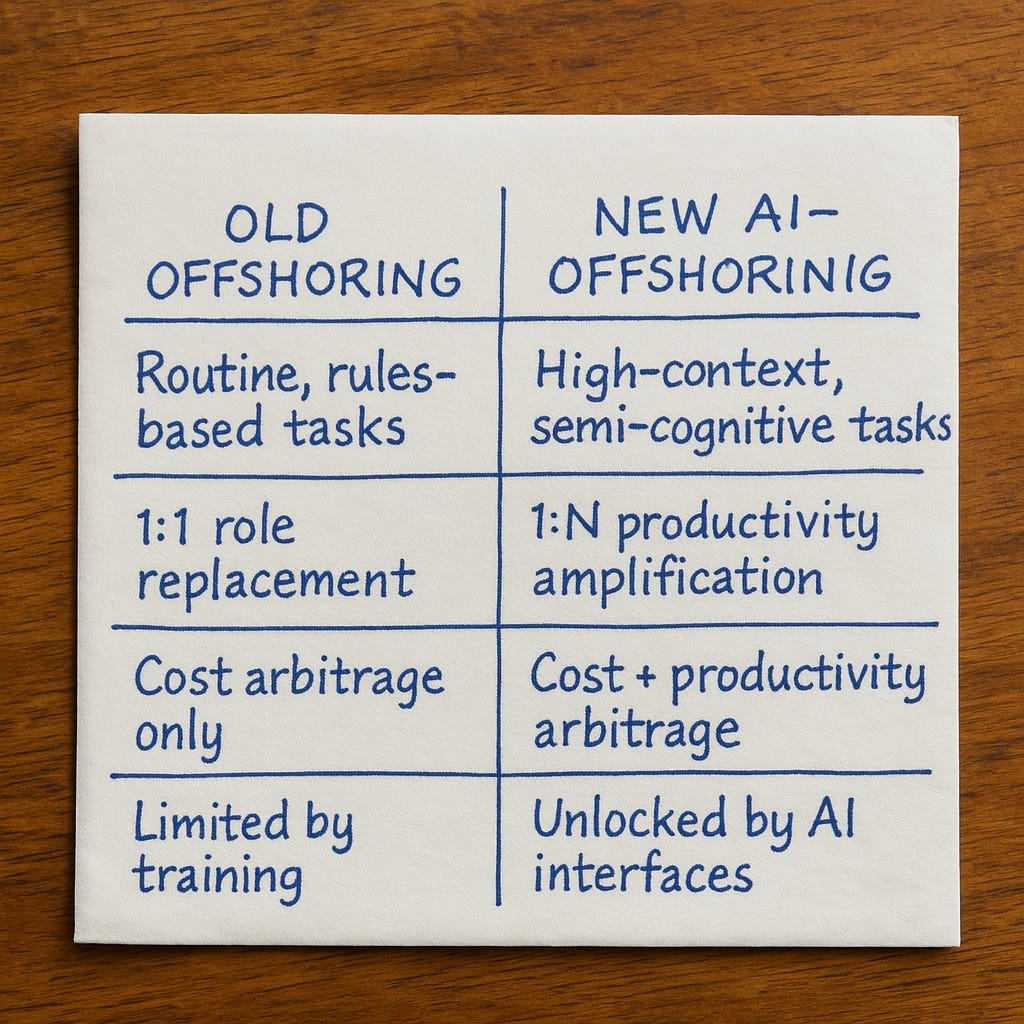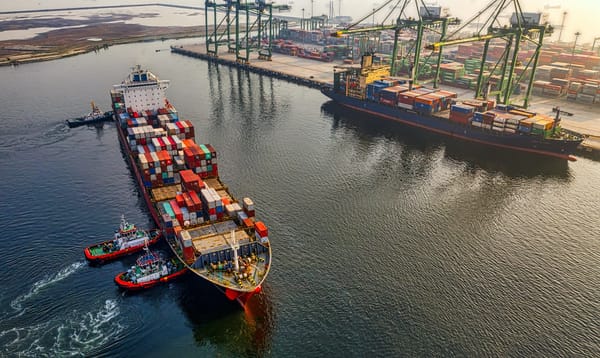Marc Andreessen says AI won’t cause unemployment.
That’s only true if the labor market stops at the U.S. border.
The future of labor isn’t being built in Menlo Park. It’s being built in Manila, Dhaka, and Karachi—by a generation of workers who are hungry, younger, faster, and yes, cheaper.
I’ve spent years building distributed, AI-augmented teams across the Global South. What I’ve seen makes Marc’s argument feel deeply out of step with where the real disruption is coming from.
1. What Marc Gets Right—And Where He Falls Short
In a widely-read March 4 Substack essay, Marc argues that AI won’t lead to mass unemployment. Most of the economy, he says, is protected either by regulation, inertia, or the fact that AI just isn’t good enough to replace human workers in sensitive or skilled jobs. His evidence includes that now-famous chart: prices of TVs and software have plummeted (where tech dominates), but healthcare, childcare, and education (where tech is stifled or irrelevant) have soared in cost. He concludes that most jobs are safe from AI.
But Andreessen’s analysis is U.S.-centric.
It’s framed as if AI adoption and economic disruption stop at national borders.
In reality, the most important shift in the labor market won’t be robots taking over hospitals or law firms. It will be a younger, AI-native, globally-connected workforce displacing large parts of the U.S. service class from the outside in.
The next wave of disruption won’t be AI alone.
It’ll be AI x Offshoring, and the fault line is generational.

2. The Offshoring x AI Curve: Why This Time Is Different
For 30 years, offshoring has eaten away at U.S. manufacturing, call centers, and back-office functions. But it was limited to tasks that could be clearly documented, repeated, and governed by rigid workflows.
Then came generative AI.
Now, tasks that once required high-context judgment—drafting emails, writing code, researching legal issues, editing marketing copy—and client-specific institutional knowledge can be semi-automated. And with the right tools, they can also be offshored.
Here’s what’s changed:

A $12,000/year worker in Dhaka who knows how to prompt GPT-5 and run automations in Zapier isn’t just “cheaper”: they’re now faster, more consistent, and more scalable than a $95,000/year middle manager still formatting Excel reports manually.
In the past, this worker in Dhaka might have needed weeks of onboarding to learn a client’s writing style or decision logic. Or it was just too difficult to learn and infeasible to offshore. Today, a few examples dropped into ChatGPT or Claude can teach an AI agent—and its human operator—to generate work that looks and feels like it was done by a team member in New York or Houston.
AI is the determining factor because it collapses the context barrier—the need to "know how we do things here"—which previously limited how far offshore talent could go up the value chain.
3. The American Worker Who Should Worry
Marc says most workers are safe.
Here’s who isn’t:
Mid-level U.S. service professionals in their 40s and 50s, in roles that can now be atomized into tasks and traded like commodities (think: analysts, coordinators, managers, admin, customer success).
The U.S. Bureau of Labor Statistics’ employment data for professionals aged 40-59 says there are:
- ~3.6 million in Business and Financial Operations
- ~3 million in Management Occupations
- ~7.2 million Office and Administrative Support workers
- ~4.9 million in Sales and Related Occupations
These 18.7 million people are competent, hardworking professionals who know the different between AI and A.1. unlike U.S. Secretary of Education Linda MacMohan, and they’re still at risk.

This group faces a double bind:
- Their jobs are increasingly tradable
- Their ability to upskill into AI-native workflows is constrained.
Academic research backs this up: older workers face steeper challenges adopting new technologies, due to lower tech self-efficacy, and digital skill acquisition declines with age, especially for software-intensive tasks.
A 45-year-old who’s mastered Microsoft Office might balk at chaining GPT prompts, browser extensions, and API calls. A 25-year-old learns it over a weekend.
The result?
An asymmetry of adaptation.
Global Gen Z workers are sprinting into the AI era. Many American Gen X professionals are still reading onboarding PDFs.
4. Why Regulation Won’t Save Them
Marc’s fallback is regulation.
AI can’t replace teachers, nurses, or lawyers, he argues, because it’s illegal to operate in those sectors without human licensing and oversight.
Fair—but that argument doesn’t apply offshore.
A U.S. firm can still hire a licensed domestic attorney to review casework…that was drafted overnight in Lagos using Claude and a team of paralegals working through Notion AI.
AI will reshape workflows so highly-regulated tasks within the highest-regulated roles remain local, and the rest can be done remotely, faster, cheaper, and in many cases, better.
Regulation protects very specific, credentialed and licensed job titles.
It does not protect task-by-task value erosion all around those job titles.
5. What We’re Really Seeing: Downward Wage Compression, Not Unemployment
Marc fixates on unemployment.
But the deeper concern isn’t that jobs vanish, it’s that wages stagnate, career ladders collapse, and domestic workers are squeezed.
Economists like Acemoglu and Restrepo have shown how automation leads to:
- Declining labor share of income
- Fewer mid-skill jobs
- A hollowing out of wage growth, especially for non-technical service roles
Offshoring x AI just accelerates that pattern.
The jobs might still exist — but the paycheck, the path, and the person have changed. It’s going to be at $10/hour instead of $50/hour, in someone else’s time zone, inside someone’s Deel account.
6. Strategic Implications
For employers:
- The real unlock isn’t AI or offshoring—it’s AI-enabled distributed teams. This is what I’ve been building for the last 5 years, and this is where the real opportunity lies.
- Hire for fluency with AI agents, not just domain knowledge.
- Rethink location-based compensation—your Manila analyst might outperform your New Jersey one in terms of real productivity, not just productivity per $1000.
For policymakers:
- Workforce resilience won’t come from “reskilling” platitudes.
- Older workers need AI-simplified tools, incentivized retraining, and role redesign, not just training vouchers.
- The coming labor crisis will look less like mass layoffs than like quiet obsolescence.
7. AI Isn’t Killing Jobs—It’s Killing the Old Deal
Marc Andreessen’s essay is optimistic about job preservation. That may be true in the global aggregate. But that’s not how U.S. workers will experience disruption.
The old deal was: do your job well, move up, get better pay, retire with dignity.
The new deal? Compete globally, upgrade constantly, or get leapfrogged by someone who will.
This isn’t science fiction.
It’s labor market arbitrage at the speed of AI.
And the people who should be most worried are being quietly bypassed by a younger, sharper, globally plugged-in generation who’ve figured out how to do more, with less, from anywhere.
Adil Husain has over two decades of experience advising Fortune 1000 firms on strategy, market intelligence and global expansion. Having lived and worked in the U.S., and China for a decade each, he brings a unique perspective on how U.S. businesses can best succeed both domestically and internationally. Adil is the Managing Director of Emerging Strategy, a global strategic intelligence firm that helps mid-market and multinational companies navigate complex markets.
You can contact Adil here or connect with him on LinkedIn for more insights.







